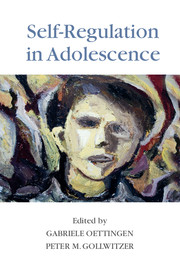Book contents
- Self-Regulation in Adolescence
- The Jacobs Foundation Series on Adolescence
- Self-Regulation in Adolescence
- Copyright page
- Contents
- Preface
- Contributors
- Part I Concepts and Processes of Self-Regulation
- Part II Historical and Biological Influences
- 5 Historical Perspectives on Self-Regulation in Adolescence
- 6 Adolescence: Biology, Epidemiology, and Process Considerations
- 7 Emotion Regulation and Primate Sociality
- Part III Neural Mechanisms
- Part IV Peer and Parent Relationships
- Part V Interventions
- Author Index
- Subject Index
- References
7 - Emotion Regulation and Primate Sociality
from Part II - Historical and Biological Influences
Published online by Cambridge University Press: 05 October 2015
- Self-Regulation in Adolescence
- The Jacobs Foundation Series on Adolescence
- Self-Regulation in Adolescence
- Copyright page
- Contents
- Preface
- Contributors
- Part I Concepts and Processes of Self-Regulation
- Part II Historical and Biological Influences
- 5 Historical Perspectives on Self-Regulation in Adolescence
- 6 Adolescence: Biology, Epidemiology, and Process Considerations
- 7 Emotion Regulation and Primate Sociality
- Part III Neural Mechanisms
- Part IV Peer and Parent Relationships
- Part V Interventions
- Author Index
- Subject Index
- References
Summary
Frans de Waal, Living Links, Yerkes National Primate Research Center and Psychology Department, Emory University.
Correspondence concerning this chapter should be addressed to Frans B. M. de Waal, Psychology Department (PAIS Bldg), Suite 270, 36 Eagle Row, Emory University, Atlanta, Georgia 30322, USA. E-mail: dewaal@emory.edu
- Type
- Chapter
- Information
- Self-Regulation in Adolescence , pp. 147 - 170Publisher: Cambridge University PressPrint publication year: 2015

